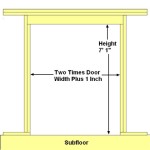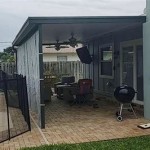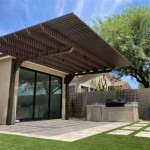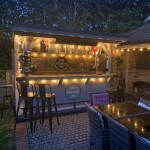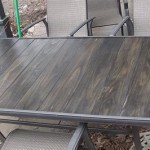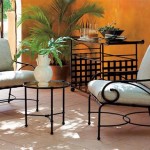Patio Surface Options: A Comprehensive Guide
The selection of a suitable surface material is a critical aspect of patio design and construction. It significantly impacts the aesthetic appeal, functionality, durability, and overall cost of the outdoor living space. A wide range of patio surface options exists, each possessing unique characteristics, advantages, and disadvantages. This article provides a comprehensive overview of various patio surface materials, assisting homeowners and landscape professionals in making informed decisions.
Key Point 1: Understanding Material Properties and Performance
Before embarking on a patio project, it is essential to understand the properties and performance characteristics of different materials. Factors such as durability, porosity, slip resistance, heat retention, and ease of maintenance should be carefully considered. In addition, understanding the long-term cost implications, including installation and ongoing maintenance expenses are paramount.
Concrete:
Concrete is a versatile and widely used patio surface material. It is durable, relatively inexpensive, and can be customized through various techniques, including staining, stamping, and texturing. Concrete's inherent strength allows it to withstand heavy foot traffic and exposure to the elements. However, concrete is prone to cracking, particularly in areas subject to freeze-thaw cycles. Regular sealing is recommended to prevent water penetration and staining. Its porous nature can lead to discoloration if spills are not promptly addressed. Furthermore, concrete can become quite hot in direct sunlight.Brick:
Brick offers a classic and aesthetically pleasing patio surface. It is known for its durability and resistance to weathering. Brick patios can be laid in various patterns, adding visual interest and character to the outdoor space. However, brick is more expensive than concrete and requires more labor-intensive installation. Like concrete, brick can be susceptible to cracking and shifting over time. Regular sweeping and occasional pressure washing are necessary to maintain its appearance. Moreover, the joints between bricks are prone to weed growth, necessitating periodic weeding or the application of polymeric sand.Pavers:
Pavers are manufactured concrete or clay units designed for interlocking installation. They are available in a wide array of shapes, sizes, colors, and textures, providing extensive design flexibility. Pavers offer excellent durability and resistance to cracking. They are also relatively easy to repair, as individual pavers can be replaced without disturbing the entire patio surface. Paver installation typically requires a compacted base of gravel and sand, which contributes to the overall cost. While generally durable, some paver types may be susceptible to staining or fading over time. Paver joints also require regular maintenance to prevent weed growth.Natural Stone:
Natural stone, such as flagstone, slate, and limestone, provides a unique and elegant patio surface. Each stone possesses natural variations in color, texture, and shape, resulting in a one-of-a-kind outdoor living space. Natural stone is highly durable and resistant to weathering. However, it is generally the most expensive patio surface option, both in terms of material cost and installation labor. The irregular shapes and sizes of natural stone can make installation challenging and time-consuming. Furthermore, some types of natural stone may be porous and require sealing to prevent staining. Uneven surfaces can also pose a tripping hazard. Proper drainage is crucial to prevent water accumulation and potential damage due to freeze-thaw cycles.Wood:
Wood decking provides a warm and inviting patio surface. It is relatively easy to install and can be a more affordable option compared to stone or pavers. Wood decking is also cooler to the touch than concrete or stone, making it a comfortable surface for bare feet. However, wood requires regular maintenance, including staining or sealing, to prevent rot, decay, and insect infestation. The lifespan of wood decking depends on the type of wood used and the level of maintenance provided. Softwoods, such as pine, are less durable and require more frequent treatment than hardwoods, such as redwood or cedar. Wood decking can also be slippery when wet, so slip-resistant coatings or treatments may be necessary.Gravel:
Gravel provides a rustic and permeable patio surface. It is a relatively inexpensive option and offers excellent drainage. Gravel patios are easy to install and require minimal maintenance. However, gravel can be unstable underfoot, making it unsuitable for areas with heavy foot traffic or furniture. It also tends to shift and spread over time, requiring periodic raking and replenishment. Weed growth can be a problem in gravel patios, necessitating the use of weed barriers or herbicides. Furthermore, gravel can be uncomfortable for bare feet. A well-defined border is essential to contain the gravel and prevent it from migrating into surrounding areas.Composite Decking:
Composite decking is a manufactured material made from a combination of wood fibers and plastic. It offers the look of wood without the maintenance requirements. Composite decking is resistant to rot, decay, and insect infestation. It is also fade-resistant and requires no staining or sealing. Composite decking is typically more expensive than wood decking but offers a longer lifespan and lower maintenance costs. However, composite decking can be hotter to the touch than wood decking in direct sunlight. It can also be more expensive than traditional wood options and may not offer the same natural aesthetic appeal.Key Point 2: Considering Environmental Factors and Climate
The local climate and environmental conditions play a significant role in determining the suitability of different patio surface materials. Factors such as temperature fluctuations, precipitation levels, sun exposure, and soil conditions must be considered. Selecting a material that is well-suited to the local climate will ensure its long-term durability and performance.
In areas with frequent freeze-thaw cycles, it is crucial to select a patio surface material that is resistant to cracking and heaving. Concrete, brick, and pavers should be properly sealed to prevent water penetration and subsequent damage from freezing and thawing. Natural stone should be selected carefully, as some types are more susceptible to cracking than others. Wood decking should be pressure-treated to prevent rot and decay. Gravel should be installed with a well-draining base to prevent water accumulation. Consider the potential for de-icing salts to damage certain materials. Some natural stones and concrete formulations are particularly vulnerable.
In hot climates, it is important to select a patio surface material that does not retain excessive heat. Light-colored materials, such as light-colored concrete or natural stone, will reflect more sunlight and stay cooler to the touch. Wood decking is also a relatively cool option compared to concrete or stone. Consider the use of shading structures, such as trees or pergolas, to reduce sun exposure and further minimize heat retention. The orientation of the patio also impacts how much sunlight it absorbs. Shady locations can make darker materials more bearable.
In areas with high rainfall, it is essential to select a patio surface material that provides adequate drainage. Gravel and permeable pavers are excellent choices for promoting water runoff. Concrete and brick should be installed with a slight slope to direct water away from the house. Wood decking should be installed with adequate spacing between boards to allow for water drainage. Proper drainage is critical to prevent water accumulation, which can lead to structural damage, mold growth, and mosquito breeding. Consider installing drains to manage excess water runoff efficiently.
Soil conditions also need to be assessed. Unstable or poorly draining soil can compromise the integrity of the patio surface. Proper soil preparation, including compaction and the installation of a gravel base, is essential to ensure a stable foundation. Consider the use of geotextile fabric to prevent soil erosion and improve drainage. Sloping sites may require retaining walls or terracing to create a level patio surface. Consulting with a geotechnical engineer may be necessary in areas with challenging soil conditions.
Key Point 3: Balancing Aesthetics, Budget, and Maintenance
The selection of a patio surface material should also consider the desired aesthetic, the available budget, and the willingness to perform ongoing maintenance. A visually appealing patio surface that complements the style of the home and landscape is important. However, it is equally important to choose a material that is affordable and requires a level of maintenance that is manageable.
Natural stone offers the most elegant and unique aesthetic, but it is also the most expensive option. Concrete, brick, and pavers offer a wide range of design possibilities and can be customized to match various architectural styles. Wood decking provides a warm and inviting aesthetic, while gravel offers a rustic and informal look. Consider the overall design of the outdoor living space and choose a patio surface material that complements the existing elements. The color, texture, and pattern of the patio surface should harmonize with the surrounding landscape and architectural details.
The cost of different patio surface materials can vary significantly. Concrete is generally the least expensive option, followed by gravel and wood decking. Brick and pavers are moderately priced, while natural stone is the most expensive. The cost of installation also varies depending on the complexity of the project and the labor rates in the area. Obtain multiple quotes from qualified contractors before making a decision. In addition to the initial cost, consider the long-term maintenance expenses. Some materials require more frequent cleaning, sealing, or repairs than others.
The level of maintenance required for different patio surface materials also varies. Gravel requires minimal maintenance, while wood decking requires regular staining or sealing. Concrete, brick, and pavers require occasional cleaning and sealing. Natural stone may require periodic sealing to prevent staining. Choose a material that fits your lifestyle and your willingness to dedicate time and effort to maintenance. Regular sweeping and the removal of debris are essential for maintaining the appearance of any patio surface. Consider the use of pressure washers or specialized cleaning solutions to remove stubborn stains or dirt.
Ultimately, the best patio surface option is the one that strikes the right balance between aesthetics, budget, maintenance, and environmental considerations. Careful planning and research are essential to making an informed decision and creating an outdoor living space that is both beautiful and functional.

Most Popular Patio Materials The 3 Best Surfaces

9 Diffe Types Of Patio Surface Options

14 Outdoor Flooring Options Ultimate Guide

Patio Floor Ideas For Spring And Summer Run To Radiance

11 Fantastic Patio Flooring Ideas To Transform Your Home

Top 7 Est Patio Flooring To Choose From

Patio Floor Ideas For 22 Diffe Types Of Patios

9 Diy Cool Creative Patio Flooring Ideas Backyard

15 Beautiful And Affordable Outdoor Flooring Options Floorings

Jazz Up Your Front House With These Stunning Outdoor Flooring Ideas

